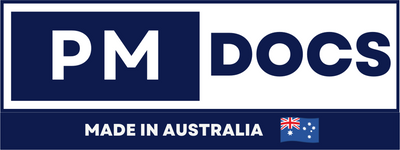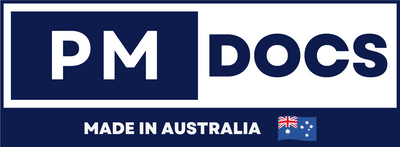Data Governance Maturity Assessment: Australian Business Guide
Introduction
This guide will walk you through the process of conducting a data governance maturity assessment, providing you with the tools and insights needed to evaluate your organization's data governance framework effectively. By following these steps, you can ensure that your organization not only meets current data governance standards but also sets a foundation for future advancements in data management.

Preparing For The Assessment
1. Assemble Your Team
The first step in conducting a data governance maturity assessment is assembling a cross-functional team. This team should include stakeholders from IT, data management, compliance, and business units. Each member brings a unique perspective, ensuring a comprehensive evaluation. Including a diverse group of stakeholders also fosters collaboration and helps build a shared understanding of data governance priorities across the organization.
2. Define Your Scope
Clearly define the scope of your assessment. Are you evaluating a specific department or the entire organization? Knowing the scope will help you set realistic goals and allocate resources effectively. A focused scope ensures that the assessment is manageable and that results are actionable within the given constraints.
3. Gather Necessary Documentation
Collect all relevant documents related to your data governance practices. This might include data policies, procedures, roles, responsibilities, and any previous assessments. Having these documents at hand will streamline the assessment process by providing a baseline for comparison and evaluation.
Conducting The Assessment
1. Choose an Assessment Framework
Select a data governance maturity assessment framework that aligns with your organization's needs. Popular frameworks include the Data Management Maturity (DMM) model by the CMMI Institute or the Enterprise Information Management (EIM) model. These frameworks offer structured approaches to evaluating data governance maturity, each with unique methodologies and focus areas.
Consider the strengths of each framework in relation to your organization's specific context. Some frameworks may emphasize certain aspects of data governance, such as data quality or security, more heavily than others. Selecting the right framework ensures that the assessment is tailored to your organization's priorities and challenges.
2. Evaluate Key Areas
Assess your organization's performance across several key areas. Common areas to evaluate include:
-
Data Quality: How accurate and consistent is your data? Consider the processes in place for data validation and error correction, and evaluate the impact of data quality on business decisions.
-
Data Management: Are there established processes for managing data lifecycle? Examine data collection, storage, and archiving practices to identify areas for improvement.
-
Compliance and Security: How well does your organization adhere to data regulations and protect data? Assess current security measures, including data encryption and access controls, to ensure data integrity.
-
Data Architecture: Is there a clear structure for data storage and access? Evaluate whether the architecture supports efficient data retrieval and integration across systems.
-
Technology and Tools: What technologies are in place to support data governance? Consider whether existing tools are effectively utilized and explore opportunities for technology upgrades.
3. Conduct Interviews and Surveys
Gather insights from stakeholders through interviews and surveys. This qualitative data will provide context to your quantitative findings and highlight areas that require attention. Interviews offer an opportunity to explore stakeholder perspectives in depth, uncovering challenges and opportunities that may not be evident from quantitative data alone.
Analyzing Your Findings
Once you've gathered all the necessary data, it's time to analyze your findings. Look for patterns, strengths, and weaknesses in your current data governance practices. Identify any gaps between your current state and desired maturity level. This analysis should be both quantitative and qualitative, integrating numerical scores with narrative insights from stakeholder feedback.
1. Develop a Maturity Score
Assign a maturity score to each key area based on your findings. This score will help you measure your organization's overall data governance maturity. Scores can range from "Initial" to "Optimized" levels of maturity. A detailed scoring system provides clarity and helps communicate the assessment results to stakeholders in an understandable way.
Consider using visual aids, such as charts or dashboards, to present the maturity scores. These tools can help illustrate the current state and desired improvements, making it easier for stakeholders to grasp the significance of the findings. A clear presentation of maturity scores aids in aligning stakeholders around the assessment results.
Creating An Improvement Plan
1. Set Priorities
With your findings in hand, set priorities for improvement. Focus on areas that will have the most significant impact on your organization's data governance capabilities. Prioritization should consider both short-term wins and long-term strategic goals, balancing immediate needs with future aspirations.
Engage with stakeholders to validate and refine priorities, ensuring that the improvement plan aligns with organizational objectives and resource availability. Collaborative prioritization fosters buy-in and commitment from all involved parties, increasing the likelihood of successful implementation.
2. Develop Actionable Steps
Create a detailed action plan outlining the steps needed to address each priority area. Assign responsibilities and set timelines to ensure accountability and progress. The action plan should be specific and actionable, with clear milestones and deliverables to guide implementation.
Consider potential barriers to implementation and develop strategies to overcome them. Anticipating challenges and proactively addressing them in the action plan increases the likelihood of success. A well-crafted action plan serves as a roadmap for achieving data governance improvements.
3. Secure Executive Support
To implement your improvement plan successfully, secure support from executives and stakeholders. Present your findings and proposed actions to gain buy-in and the necessary resources. Demonstrating how the improvements align with organizational goals and provide value to the business can help secure executive endorsement.
Consider crafting a compelling business case that highlights the benefits of enhanced data governance, such as improved decision-making, regulatory compliance, and risk reduction. Securing executive support is critical for ensuring that the necessary resources and attention are devoted to the improvement plan.
Implementing Changes And Monitoring Progress
1. Execute the Plan
Begin implementing the changes outlined in your action plan. Ensure that all team members understand their roles and responsibilities in executing the plan. Communication and coordination are key to successful implementation, so establish regular check-ins and progress updates to keep everyone aligned.
Encourage a culture of accountability and continuous improvement among team members. Recognize achievements and address challenges openly to maintain momentum and motivation throughout the implementation process. Effective execution requires a proactive and collaborative approach.
2. Monitor and Adjust
Regularly monitor progress and make adjustments as needed. Data governance is an ongoing process, and continuous improvement is key to achieving long-term success. Establish metrics to track progress and evaluate the impact of implemented changes on data governance maturity.
Be prepared to adapt the plan in response to new insights or changing organizational priorities. Flexibility and responsiveness are essential for maintaining the relevance and effectiveness of your data governance efforts. Ongoing monitoring ensures that you remain on track to achieve your data governance goals.
3. Reassess Regularly
Plan to conduct regular data governance maturity assessments to track your progress over time. This will help you stay on course and make necessary adjustments as your organization evolves. Regular reassessments provide an opportunity to celebrate successes, recalibrate strategies, and identify new areas for improvement.
Consider establishing a schedule for periodic reassessments, such as annually or biannually, to maintain focus and momentum. Routine evaluations reinforce the commitment to data governance excellence and support the organization's adaptation to an ever-changing data landscape.
Conclusion
Conducting a data governance maturity assessment is a vital step towards improving your organization's data management practices. By understanding your current maturity level, you can identify areas for improvement and develop a clear action plan to enhance your data governance framework. With a commitment to continuous improvement, your organization can achieve greater data accuracy, compliance, and security. Remember, effective data governance is not a one-time effort but an ongoing journey that requires dedication and adaptability. By following the steps outlined in this guide, you can position your organization for success in the ever-evolving world of data management. Embrace the journey as an opportunity to unlock the full potential of your data, driving innovation and competitive advantage in your industry.




